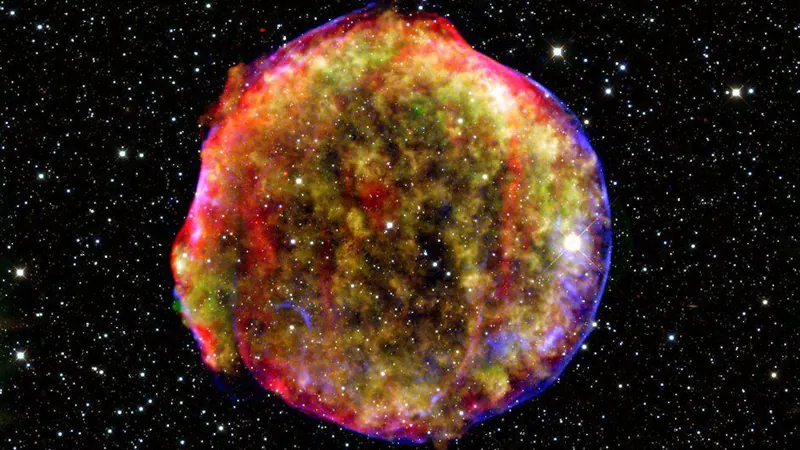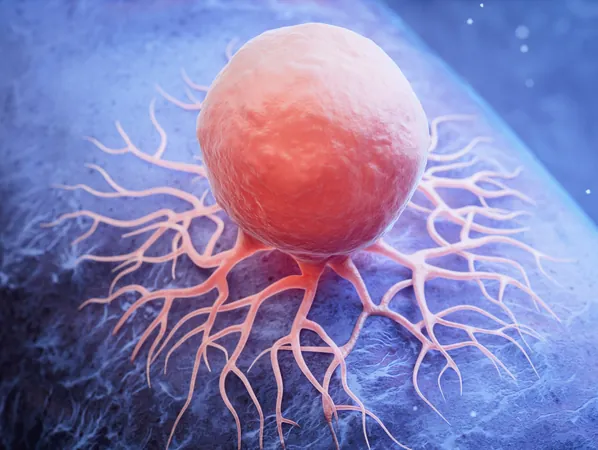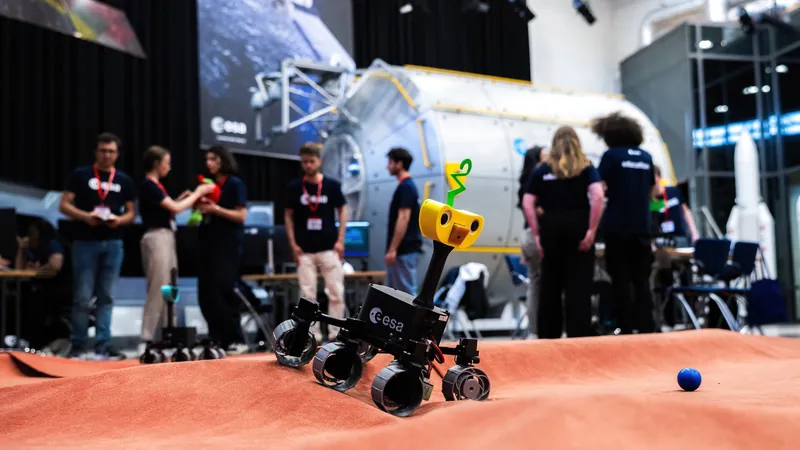
Supernovas: The Universe's Ultimate Particle Colliders?
2025-05-25
Author: Wei
A Stellar Discovery That Could Change Everything
For decades, scientists have been captivated by cosmic rays—high-energy particles that zip through space at unimaginable speeds. These particles, composed mainly of protons and occasionally heavier nuclei, are capable of reaching energies surpassing one peta-electron volt (PeV). To put that into perspective, that’s up to a staggering thousand times more powerful than the collisions at the renowned Large Hadron Collider!
What Makes Supernovas So Special?
Research is now shining a light on supernovas as potential sources of these powerful cosmic rays. Supernovas, the explosive deaths of massive stars, may indeed be the engines behind these energy champions. With explosive power, a torrent of elementary particles, and magnetic fields that create a whirlwind effect, supernovas have all the indicators of cosmic ray generators.
A Shocking Revelation on Cosmic Ray Production
Historically, observations of nearby supernova remnants such as Tycho and Cassiopeia A have thrown a wrench in the theory, as these cosmic rays turned out to be weaker than anticipated. However, a groundbreaking study published in Astronomy & Astrophysics uncovers that under specific conditions, these remnants can transform into what researchers call "PeVatrons"—explosive environments capable of generating PeV cosmic rays.
The Stars Must Align: Conditions for PeVatrons
This transformative process begins long before a supernova erupts. Stars must shed a considerable amount of mass—at least the equivalent of two suns—typically due to aggressive stellar winds that strip away their outer layers. However, for optimal success, this ejected material must remain dense and concentrated, rather than spreading out too widely.
The Chaotic Dance of Particles
When the supernova finally occurs, the resulting shock wave slams into this dense shell of material, creating a high-energy environment unlike anything else. As the shock wave travels, it amplifies the surrounding magnetic fields to astonishing levels, accelerating subatomic particles trapped within the debris. Each collision sends particles bouncing around chaotically, gradually boosting their energy until they break free and escape into the cosmos.
The Countdown to Cosmic Creation
This incredible cosmic event, however, is not sustainable forever. Over the months that follow the explosion, the shock wave begins to weaken, producing numerous cosmic rays but fewer reaching the powerful PeV threshold. The process, while sensational, ultimately winds down, but the potential implications of supernovas as nature’s most formidable particle colliders can’t be ignored.
A New Era for Astronomy
As we unravel the mysteries behind these stellar explosions, we not only gain insights into the universe's energetic phenomena but also open doors to understanding the fundamental particles and forces that shape our existence. Who knows what other cosmic wonders await our discovery?



 Brasil (PT)
Brasil (PT)
 Canada (EN)
Canada (EN)
 Chile (ES)
Chile (ES)
 Česko (CS)
Česko (CS)
 대한민국 (KO)
대한민국 (KO)
 España (ES)
España (ES)
 France (FR)
France (FR)
 Hong Kong (EN)
Hong Kong (EN)
 Italia (IT)
Italia (IT)
 日本 (JA)
日本 (JA)
 Magyarország (HU)
Magyarország (HU)
 Norge (NO)
Norge (NO)
 Polska (PL)
Polska (PL)
 Schweiz (DE)
Schweiz (DE)
 Singapore (EN)
Singapore (EN)
 Sverige (SV)
Sverige (SV)
 Suomi (FI)
Suomi (FI)
 Türkiye (TR)
Türkiye (TR)
 الإمارات العربية المتحدة (AR)
الإمارات العربية المتحدة (AR)